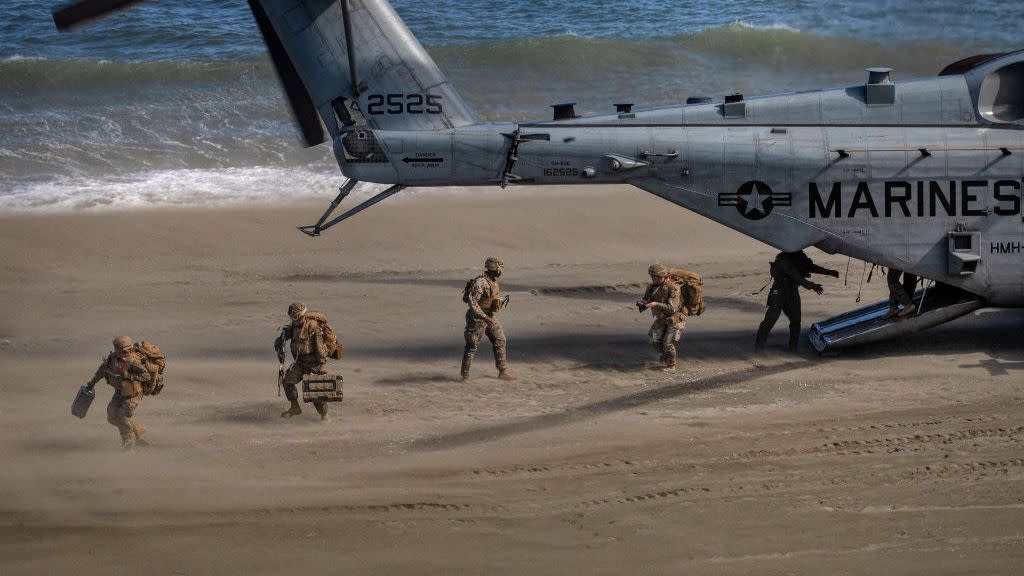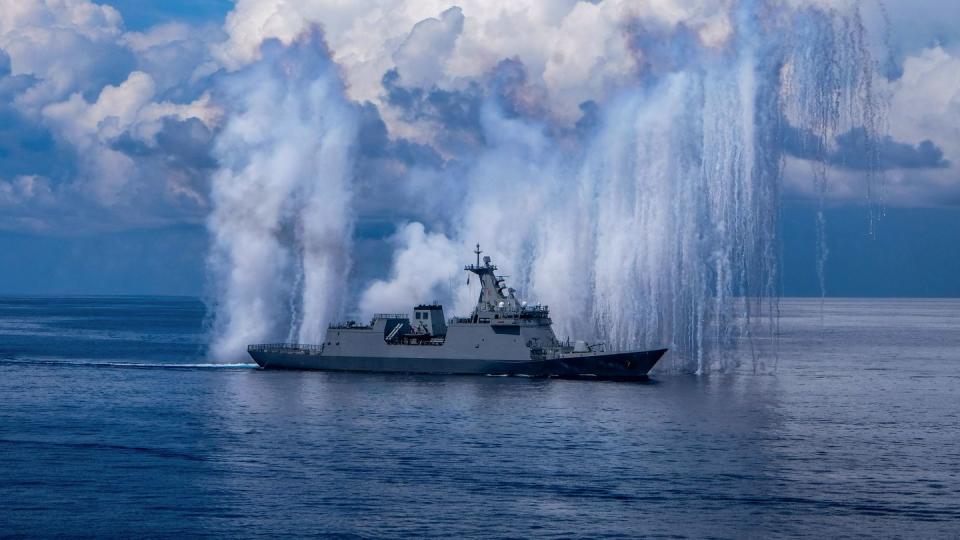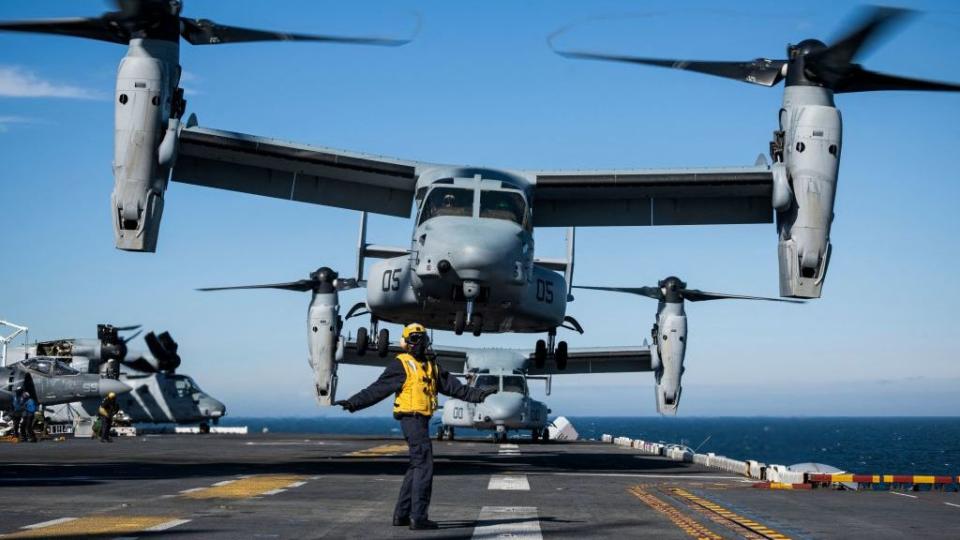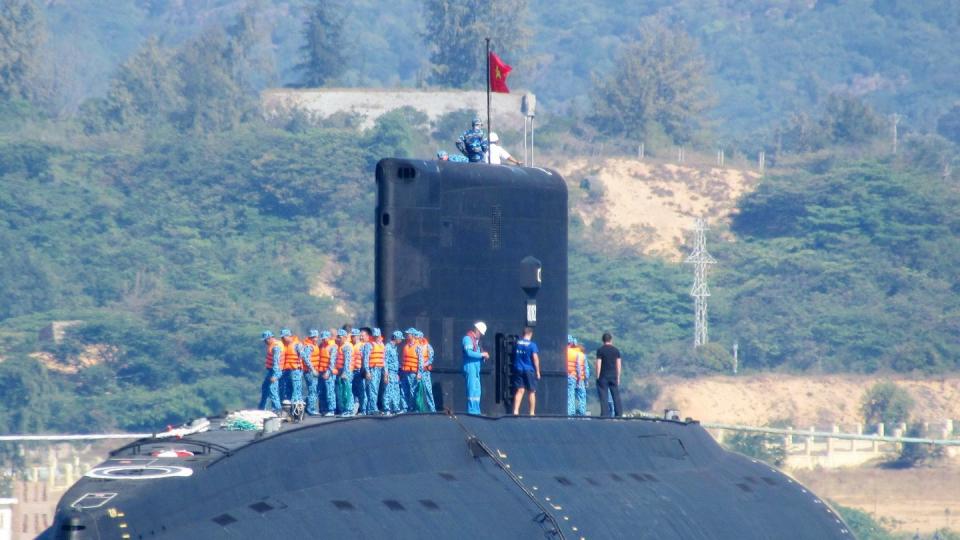There Are 3 Ways War Could Realistically Start Between the United States and China

If war ever breaks out between the United States and China, the South China Sea is the most likely theater.
China’s disputes with its neighbors over competing territorial claims in the sea, its threats to take back Taiwan by force, and the overall tension in the region after more than a decade of threats, harassment, and military buildups have set the stage for a conflagration in the South China Sea—whether anyone wants it or not.
Here are three hypothetical scenarios that would see the sea become a battleground for two of the most powerful nations on Earth.
Scenario No. 1: Accidental War

In 2027, China pushes to expand its territorial claims to include Second Thomas Shoal, part of the Spratly islands and only 195 miles from the Philippines. Chinese Marines attempt to intimidate Philippine Marine Corps troops stationed on the beached landing ship BRP Sierra Madre by staging a live-fire exercise nearby, but the exercise is mistaken for an assault. Philippine Marines return fire, causing casualties, and Philippine warplanes damage a Chinese Type 071 amphibious landing dock. Poor damage control results in the loss of the large warship and heavy loss of life, an embarrassing incident that enrages the Chinese Communist Party.
As both sides trade blows, the conflict expands to the Chinese aircraft carrier Shandong conducting airstrikes on Philippine airfields and Chinese cruise missiles striking military bases across the archipelago.
The United States, invoking its mutual defense treaty with the Philippines, sends a Marine Littoral Regiment and Marine Expeditionary Unit, backed up by two carrier strike groups and B-1 bombers based on Guam, to seize Chinese-held Subi Reef. U.S. and Chinese air and naval forces become directly engaged. The two powers are embroiled in an open-ended conflict that no one wanted and no one knows how to stop.
If war breaks out in the South China Sea, Mark Cancian, senior advisor at the Center for Strategic and International Studies, tells Popular Mechanics, the United States would be fighting at the very edge of its capabilities. “The U.S. problem is that it doesn’t have bases nearby. It would have to project power from Japan, Okinawa, Guam, or Australia,” he says.
“However,” Cancian explains, “the recent signing of agreements with the Philippines gives the United States access to nine bases. That could help a lot. If the Philippine government agreed, the United States could use the airfields and ports to exert control over the region. It would still be a difficult fight since China is much closer to the area than the United States.”
Scenario No. 2: Taiwan Invasion

China believes Taiwan, a self-governing island nation located 100 miles off its coastline, is a renegade part of China that needs to be brought back under Beijing’s control. In 2030, after two decades of building up an invasion force, the People’s Republic of China commences an invasion of Taiwan.
The invasion gets off to a bad start, with inexperienced Chinese military forces struggling to accomplish what would be to any military a complex and difficult operation. U.S. forces suffer a setback when military bases in Japan and Guam are struck by Chinese precision guided munitions.
After one month the war isn’t going anyone’s way: Chinese forces have established a foothold on the island but are unable to bring in reinforcements, due to American submarines sinking transport ships in the Taiwan Strait. Taiwanese forces are under constant bombardment and unable to drive the Chinese into the sea, and the U.S. cannot bring its heavy firepower, in the form of carrier strike groups and heavy bombers, to bear against Chinese targets.
As a means of pressuring China to stop the war, the U.S. Marine Corps, with support from the U.S. Army, embarks on an island-hopping campaign in the South China Sea. One by one, China’s islands—stripped of air and naval support by the all-consuming fight over Taiwan—fall under Marine Corps control. As the situation becomes more serious, Beijing is forced to siphon off forces from the Taiwan theater to deal with the advancing Marines. The ultimate goal is to force China to break off its invasion to save its holdings in the South China Sea, though privately U.S. commanders press to win in both theaters.
Is expanding the war to the South China Sea a viable strategy? “Having the U.S. control the South China Sea would help only a little in a fight for Taiwan.” Cancian says. “Mainly, it would distract the Chinese and force them to send forces south instead of east to Taiwan. The main value of being able to control the South China Sea is to reassure regional allies and partners like the Philippines, Singapore, Malaysia, and Vietnam.”
Scenario No. 3: A Broken Distraction

In this last scenario, the Chinese Communist Party embarks on a foreign adventure to distract its citizens from worsening economic conditions.
Chinese military forces begin to intimidate and eventually open fire on Vietnamese forces shadowing Beijing’s survey ships in South China Sea waters claimed by both sides. The fighting escalates into a full-on air and naval conflict, though the land border between the two countries remains relatively quiet.
Vietnamese forces are spread thin by the country’s 2,140-mile-long coastline along the South China Sea, which is vulnerable to incursion by China’s large navy. The Vietnamese People’s Navy submarine Khánh Hòa scores a dramatic success with the torpedoing of the aircraft carrier Shandong, sending it and more than a thousand Chinese sailors to the bottom of the South China Sea.
What originally started as a limited military operation meant to rally the Chinese people around the country and party has now spiraled out of control. The sinking of the carrier results in the mobilization of the Chinese Army and the possibility that it could cross the border into Vietnam. In order to forestall the invasion, the United States warns it could enter the conflict on the side of Vietnam, using the Japan-based 7th Fleet to secure Vietnam’s sea flank. The Navy and Marine Corps prepare for a campaign to roll up China’s islands in the South China Sea, but there is disagreement about what would happen next and how to terminate the war.
The Takeaway
A war in the South China Sea would be immensely destructive. It also might not initially involve the United States, but would eventually force Washington to take a stand, either on principle or in response to international treaty commitments.
A war could start with none of the participants having any idea of how it might end—with the specter of the U.S. and Chinese nuclear arsenals hovering over the battleground. If war does break out in the South China Sea, the entire world will hold its breath, and for good reason.
You Might Also Like

